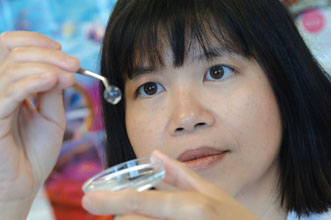The successful implantation of biosynthetic corneas into human eyes is giving hope to millions of partially-sighted people worldwide.

A new study, published in the journal Science Translational Medicine (August 25, 2010), by scientists in Sweden and Canada has shown that biosynthetic corneas can help regenerate and repair damaged eye tissue and improve vision in humans.
The breakthrough could spell the end to lengthy waiting lists for human corneas, with the UK currently experiencing a shortage each year of around 500 corneas.
Dr May Griffiths and Professor Per Fagerholm, from Linköping University in Sweden, replaced damaged corneal tissue in 10 patients and replaced it with the biosynthetic cornea.
Register now to continue reading
Thank you for visiting Optician Online. Register now to access up to 10 news and opinion articles a month.
Register
Already have an account? Sign in here

